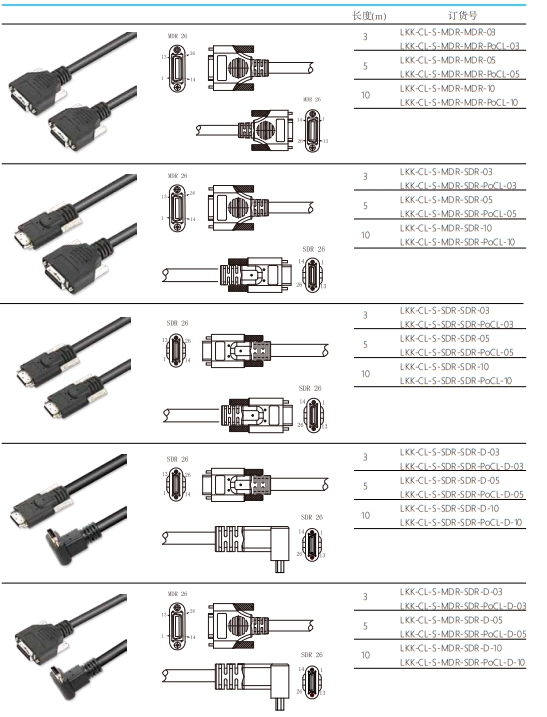Camera Link Cable: A Critical Connection for High-Speed Machine Vision Applications
In modern industrial automation and machine vision systems, Camera Link cables play an indispensable role, serving as the core bridge between industrial cameras and frame grabbers. Camera Link is an interface standard designed for high-speed digital image transmission. It is widely used in industrial inspection, medical imaging, scientific research, and military applications, where transmission speed, data integrity, and stability are critical.
Advantages of Camera Link Technology
Camera Link cables are designed to provide high-performance image data transmission. They utilize differential signaling to effectively reduce electromagnetic interference (EMI) and ensure stable and reliable data transmission. Standard Camera Link configurations offer transmission bandwidths ranging from 255 MB/s in Base mode to 850 MB/s and higher in Full mode, making them suitable for high-resolution, high-frame-rate cameras.
Another advantage of this technology is its standardization. The Camera Link standard is developed and maintained by the AIA (Automated Imaging Association), ensuring high compatibility between cameras and frame grabbers from different manufacturers. This interoperability brings significant convenience to system integrators and end users, simplifying the complexity of system design and deployment.
The Impact of Cable Construction and Materials
The performance of Camera Link cables is closely related to their construction and materials. High-quality cables typically utilize multi-layer shielding, including aluminum foil and braided shielding, to further suppress interference from external electromagnetic noise and ensure signal purity. The choice of conductor material is also crucial. Oxygen-free copper conductors are widely used due to their excellent conductivity, which effectively reduces signal attenuation.
In addition, the cable jacket material must be resistant to wear, bending, and oil to withstand harsh industrial environments. For example, PUR (polyurethane) jackets, due to their excellent chemical resistance and mechanical strength, are often used in applications that require frequent movement or exposure to harsh environments. Selecting cables that meet international certification standards such as UL or CE ensures product quality and safety.
Choosing the Right Camera Link Cable
Selecting the right Camera Link cable requires consideration of several factors. First, cable length affects signal attenuation, so the appropriate length should be selected based on actual application requirements and avoid excessive length. Second, the connector type. Common Camera Link cables have MDR and SDR connectors, which must match the interface type on the camera and frame grabber.
Furthermore, cable flexibility is crucial for dynamic applications such as drag chains or robotic arms. Highly flexible cables can withstand millions of bending cycles without compromising performance. For particularly demanding applications, such as those operating in high or low temperature environments, cables made of specialized heat-resistant materials are required.
Camera Link Cable Applications
Camera Link cables have a wide range of applications. In industrial automation, they are used for defect detection, dimensional measurement, positioning guidance, barcode reading, and robotic vision. For example, in semiconductor manufacturing, Camera Link cables connect high-resolution cameras for precise wafer inspection. In food and pharmaceutical production, they are used to quickly identify packaging defects or product batch numbers.
In the medical field, Camera Link cables are used to connect medical imaging devices such as endoscopes, microscopes, and medical scanners, providing clear, latency-free images. Scientific research institutions also frequently utilize Camera Link technology for high-speed image acquisition, such as in particle image velocimetry (PIV) and astronomical observations.
Conclusion
In summary, Camera Link cables are the cornerstone of high-performance machine vision systems. Their standardized design, superior transmission performance, and adaptability to harsh environments make them an irreplaceable choice for numerous industrial and scientific applications. Choosing high-quality Camera Link cables not only ensures stable and reliable data transmission but also provides a solid foundation for overall system performance.
High-quality products are available. Please contact us for inquiries!

Competitive Price:
Place of Origin: China (mainland)
Sales Method: Export, Manufacture, OEM/ODM
Payment Term: T/T, L/C
Safety/Quality Approvals: Quality system meets ISO 9002 standard



















